Overview
Hypogonadism is a condition that causes decreased function of the gonads, which are the testes in males and the ovaries in females, and decreased production of sex hormones. You may be born with the condition or it can develop later in life from injury or infection. Some types of hypogonadism can be treated with hormone replacement therapy.
The condition may have genetic, menopausal, autoimmune and viral causes, or may develop after cancer treatments such as radiation and chemotherapy. Fasting, weight loss, stress and eating disorders such as anorexia nervosa and bulimia can also cause the condition.
What are the types of hypogonadism?
Testicular failure (primary hypogonadism)
Testicular failure occurs when the brain is signaling the testicle to make testosterone and sperm, but the testicles are not responding correctly. As a result, the brain increases the amount of the gonadotropins signals, which causes a higher-than-normal level of these signals in the blood. For this reason, this condition is also referred to as hypergonadotropic hypogonadism. This is the most common category of hypogonadism.
Secondary hypogonadism
Secondary hypogonadism (also called hypogonadotropic hypogonadism) occurs when the brain fails to signal the testicles properly. In men who have secondary hypogonadism, the testosterone levels may be very low, and sperm are usually missing from the semen. Some boys are born with this condition. In most cases, it is discovered when a boy fails to go through puberty.
Pathophysiology of hypogonadism
The gonads (ovaries or testes) function as part of the hypothalamic-pituitary-gonadal axis. A hypothalamic pulse generator resides in the arcuate nucleus, which releases luteinizing hormone (LH)-releasing hormone (LHRH), which is also termed gonadotropin-releasing hormone (GnRH), into the hypothalamic-pituitary portal system. Data suggest that a gene named KISS is important in the development of the LHRH-secreting cells. In response to these pulses of LHRH, the anterior pituitary secretes follicle-stimulating hormone (FSH) and LH, which, in turn, stimulate gonadal activity. The increase in gonadal hormones results in lowered FSH and LH secretion at the pituitary level, completing the feedback loop. In the testes, LH stimulates Leydig cells to secrete testosterone, whereas FSH is necessary for tubular growth. In the ovaries, LH acts on theca and interstitial cells to produce progestins and androgens, and FSH acts on granulosa cells to stimulate aromatization of these precursor steroids to estrogen.
Hypogonadism may occur if the hypothalamic-pituitary-gonadal axis is interrupted at any level. Hypergonadotropic hypogonadism (primary hypogonadism) results if the gonad does not produce the amount of sex steroid sufficient to suppress secretion of LH and FSH at normal levels. Hypogonadotropic hypogonadism may result from failure of the hypothalamic LHRH pulse generator or from inability of the pituitary to respond with secretion of LH and FSH. Hypogonadotropic hypogonadism is most commonly observed as one aspect of multiple pituitary hormone deficiencies resulting from malformations (eg, septooptic dysplasia, other midline defects) or lesions of the pituitary that are acquired postnatally.
Normosmic hypogonadotropic hypogonadism, in which the sense of smell is not disrupted, has been associated with mutations in GNRH1, KISS1R, and GNRHR genes. Although their exact functions are unclear, the genes TAC3 and TACR3 have also been associated with normosmic hypogonadotropic hypogonadism. Kallmann syndrome (anosmic hypogonadotropic hypogonadism) has been associated with mutations in KAL1, FGFR1, FGF8, PROK2, and PROKR2 genes. The relationship with Kallmann syndrome is thought to be because these genes are all related to the development and migration of GnRH neurons. Mutations of an additional gene, CHD7, which has been associated with CHARGE syndrome, has also been found in patients with normosmic or anosmic hypogonadotropic hypogonadism.
What are the causes of primary hypogonadism?
Causes of primary hypogonadism include:
- Congenital (the person is born with the condition): certain conditions, including Klinefelter’s syndrome, cryptorchidism, varicocele, and myotonic dystrophy; gene mutation; chromosomal abnormalities
- Acquired: infections; radiation; environmental toxins; alkylating agents; ketoconazole; glucocorticoids; testosterone and/or anabolic steroid abuse; testicular torsion (twisting of the spermatic cord inside the testicle); autoimmune damage; chronic systemic illness
- Idiopathic: unknown cause
What are the causes of secondary hypogonadism?
Causes of secondary hypogonadism include:
- Congenital (the person is born with the condition): certain conditions, including Kallman’s syndrome, Prader Willi syndrome; idiopathic (cause unknown)
- Acquired: hyperprolactinemia; diabetes mellitus; obesity; steroid treatment; critical illness; chronic opiate use; anorexia nervosa; idiopathic (cause unknown)
- Damage to pituitary: benign (non-cancerous) tumors and cysts; malignancy (cancer); infections; trauma (including surgery in certain areas of the brain); radiation; pituitary bleeding
Risk Factors
- Obesity: Up to 79% of obese men have hypogonadism.
- Diabetes: Up to 81% of men with type 2 diabetes have hypogonadism.
- Metabolic syndrome: Up to 35% of men with the metabolic syndrome have hypogonadism.
- Chronic diseases: Chronic diseases such as cardiovascular diseases, liver or kidney disease, and rheumatoid arthritis may be risk factors for low testosterone.
- Normal aging: Testosterone levels decline with age in most men. The average rate of decrement in total testosterone levels has been found to be 110 ng/dL every decade.
- Medications: Statins (which are widely prescribed for dyslipidemia), glucocorticoid medications and opioid treatment for chronic pain are well known medications that reduce testosterone levels and may precipitate hypogonadism. 5-alpha reductase inhibitors, which inhibit DHT synthesis, impair sexual function and reduce testosterone levels.
- Pituitary disorders: Pituitary dysfunction can impair the release of LH and FSH, which are hormones that affect normal testosterone and sperm production, respectively.
- Cancer and cancer treatment: Cancer of the testes or pituitary tumors can lead to low testosterone production. Chemotherapy or radiation therapy can also interfere with testosterone production.
- Injury to the testes: Testicular damage can cause reduced testosterone production.
- Hemochromatosis: A genetic disorder causing the body to absorb too much iron from the diet. Hemochromatosis can result in the deposition of iron in various body organs, including the hypothalamus, pituitary and testes, which impairs testosterone production.
- HIV/AIDS: The HIV virus can cause low levels of testosterone by affecting the hypothalamus, pituitary and testes.
- Klinefelter’s syndrome: A genetic deficiency in testosterone production. Affects between 1 in 500 and 1 in 1000 men.
- Hypothalamic disorder: Abnormal development of the hypothalamus and is a risk factor for low testosterone.
- Mumps orchitis: A mumps infection that involves the testes as well as the saliva glands may result in long-term damage affecting testosterone production if it occurs during adolescence or adulthood.
- Undescended testes: Failure of one or both of the testes to descend at birth (which occurs in approximately 1 in 4 boys born prematurely and 1 in 20 boys born at term) may lead to a failure of the testes to develop properly if the condition does not correct itself naturally within the first year of life or if not corrected in early childhood.
Signs and Symptoms of hypogonadism
Girls who have hypogonadism will not begin menstruating. Hypogonadism can affect their breast development and height. If hypogonadism occurs after puberty, symptoms in women include:
- Hot flashes
- Energy and mood changes
- Menstruation becomes irregular or stops
In boys, hypogonadism affects muscle, beard, and genital and voice development. It also leads to growth problems. In men the symptoms are:
- Breast enlargement
- Muscle loss
- Decreased interest in sex (low libido)
If a pituitary or other brain tumor is present (central hypogonadism), there may be:
- Headaches or vision loss
- Milky breast discharge (from a prolactinoma)
- Symptoms of other hormonal deficiencies (such as hypothyroidism)
The most common tumors affecting the pituitary are craniopharyngioma in children and prolactinoma adenomas in adults.
Hypogonadism complications
Complications of hypogonadism in males
- Infertility
- Erectile dysfunction
- Osteoporosis
- Decreased muscle mass and body hair
- A low sex drive
Complications of hypogonadism in females
- Menstrual irregularities
- Early menopause
- Infertility
- Osteoporosis
- A low sex drive
How is hypogonadism diagnosed?
Your doctor will conduct a physical exam to confirm that your sexual development is at the proper level for your age. They may examine your muscle mass, body hair, and your sexual organs.
Hormone tests
- If your doctor thinks you might have hypogonadism, they’ll first check your sex hormone levels. You’ll need a blood test to check your level of follicle-stimulating hormone (FSH) and luteinizing hormone. Your pituitary gland makes these reproductive hormones.
- You’ll have your estrogen level tested if you’re female. If you’re male, you’ll have your testosterone level tested. These tests are usually drawn in the morning when your hormone levels are highest. If you’re male, your doctor may also order a semen analysis to check your sperm count. Hypogonadism can reduce your sperm count.
- Your doctor may order more blood tests to help confirm a diagnosis and rule out any underlying causes.
- Iron levels can affect your sex hormones. For this reason, your doctor may check for high blood iron levels, typically seen in hemochromatosis.
- Your doctor may also wish to measure your prolactin levels. Prolactin is a hormone that promotes breast development and breast milk production in women, but its present in both genders.
- Your doctor may also check your thyroid hormone levels. Thyroid problems can cause symptoms similar to hypogonadism.
Imaging tests
- Imaging tests can also be useful in diagnosis. An ultrasound uses sound waves to create an image of the ovaries and check for any problems, including ovarian cysts and polycystic ovary syndrome.
- Your doctor may order MRIs or CT scans to check for tumors in your pituitary gland.
How is hypogonadism treated?
Hypogonadism can be treated by giving the patient testosterone, or by increasing the signals from the brain that cause the testicle to produce testosterone and sperm. The best treatment for hypogonadism depends upon the type of hypogonadism and the patient’s goals.
Testosterone replacement
Several treatment options exist for testosterone replacement, including oral preparations of testosterone derivatives; intramuscular injections of long-acting testosterone esters; transdermal patches applied to the scrotum or other areas of the body (eg, upper arms, legs, abdomen, or back); and a recently approved 1% testosterone gel. Each method possesses a unique profile as described below.
Injection therapy: The classic form of androgen replacement is injection therapy using one of the long-acting testosterone preparations such as testosterone enanthate or testosterone cypionate. Both of these agents have been widely used for many years and are the most cost-effective method of male hormone replacement. However, both preparations must be administered every 2 to 4 weeks, and although they are effective, they are not physiologic. Testosterone levels surge to supranormal levels approximately 72 hours after injection and then decrease for 14 to 21 days. By day 14 post injection, serum testosterone levels are again below normal. These highs and lows in serum testosterone may produce significant mood swings with noticeable fluctuations in libido and sexual functioning.
Oral Testosterone: The oral testosterone preparations (methyl testosterones) available in the United States result in unacceptable levels of hepatotoxicity and should not be used for testosterone replacement therapy. In addition, these oral agents have erratic androgenic effects, since they increase serum levels of testosterone metabolites rather than produce true elevations in testosterone.
Patches and Gel: Transdermal testosterone patches and gel formulations provide relative convenience, as well as controlled release of testosterone that maintains serum levels within the normal range. This controlled release mimics the normal circadian patterns of testosterone secretion and provides a more physiologic approach to testosterone replacement by producing high morning levels of the hormone.
Nasal: This testosterone gel (Natesto) can be pumped into the nostrils. This option reduces the risk that medication will be transferred to another person through skin contact. Nasal-delivered testosterone must be applied twice in each nostril, three times daily, which might be more inconvenient than other delivery methods.
Implantable pellets: Testosterone-containing pellets (Testopel) are surgically implanted under the skin every three to six months. This requires an incision.
Treatment of infertility due to hypogonadism
If a pituitary problem is the cause, pituitary hormones can be given to stimulate sperm production and restore fertility. A pituitary tumor may require surgical removal, medication, radiation or the replacement of other hormones.
There’s often no effective treatment to restore fertility in a man with primary hypogonadism, but assisted reproductive technology may be helpful. This technology covers a variety of techniques designed to help couples who have been unable to conceive.
Treatment for boys
Treatment of delayed puberty in boys depends on the underlying cause. Three to six months of testosterone supplementation given as an injection can stimulate puberty and the development of secondary sex characteristics, such as increased muscle mass, beard and pubic hair growth, and growth of the penis.
Treatment for women
Treatment of hypogonadism is directed at the underlying pathology where possible, helping the woman become fertile if desired, and preventing the long-term complications of hypoestrogenism (ie, osteoporosis, increased cardiovascular disease, and urogenital atrophy).
As a general rule, women of reproductive age with hypoestrogenism should receive hormone replacement therapy. Specialist input should be sought, as there are potential significant complications of hormone therapy, such as:
- Endometrial hyperplasia and carcinoma in unopposed oestrogen therapy — it is usual to add a progestin to stop this
- Increased risk of breast cancer, venous thromboembolism, stroke, and ischaemic heart disease.
Post-menopause, hormone replacement therapy is indicated for significant symptoms.
Hypogonadism Prevention
- Although most of the known causes of Hypogonadism cannot be prevented, it would still be helpful to keep a healthy lifestyle all throughout. Maintaining a healthy eating habit and a normal body weight would be ideal not only for your wellbeing. It can also save you from Hypogonadism. You must also take advantage of your youth. Keep an active lifestyle and infuse regular exercises in your day-to-day endeavor.
- Also, never put for another day your urge to consult a health professional when you feel that something is not right. Early detection and correct diagnosis is important in a sense that the source of the problem is stopped before it creates anymore damage.
- In cases like Hypogonadism, which is a treatable disease, you need not to suffer long and hard. You can easily free yourself of the harsh effects of your sex glands defects with the right amount of treatment under the guidance of a medical expert.
- Acceptance that a problem is present — no matter how emotionally challenging it may be – is important because that is the only time you can find something to solve it. Never fear about divulging your impotence or infertility especially if it is to a doctor. For one, doctors swore on secrecy. They will not strut around to expose your condition. Second, and the most important thing of all, is that they can help you solve your problem.
 Diseases Treatments Dictionary This is complete solution to read all diseases treatments Which covers Prevention, Causes, Symptoms, Medical Terms, Drugs, Prescription, Natural Remedies with cures and Treatments. Most of the common diseases were listed in names, split with categories.
Diseases Treatments Dictionary This is complete solution to read all diseases treatments Which covers Prevention, Causes, Symptoms, Medical Terms, Drugs, Prescription, Natural Remedies with cures and Treatments. Most of the common diseases were listed in names, split with categories.
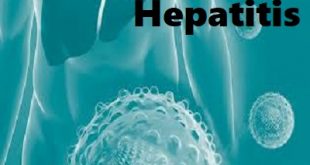

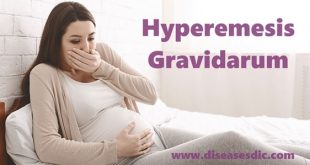
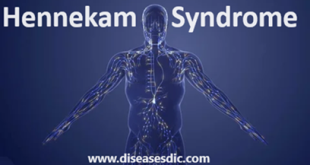
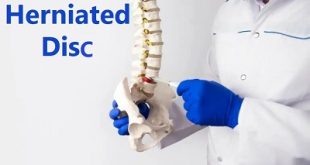

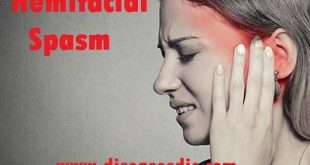

kindly specify the right medication for low [email protected] and high prolactin@196
For low progesterone levels, hormone replacement therapy or progesterone supplements may be considered. Elevated prolactin levels might be addressed with medications such as cabergoline or bromocriptine. It’s crucial to consult with a healthcare professional for proper diagnosis and personalized treatment based on individual health factors. Regular follow-ups and monitoring are essential to assess the effectiveness of the chosen treatment.